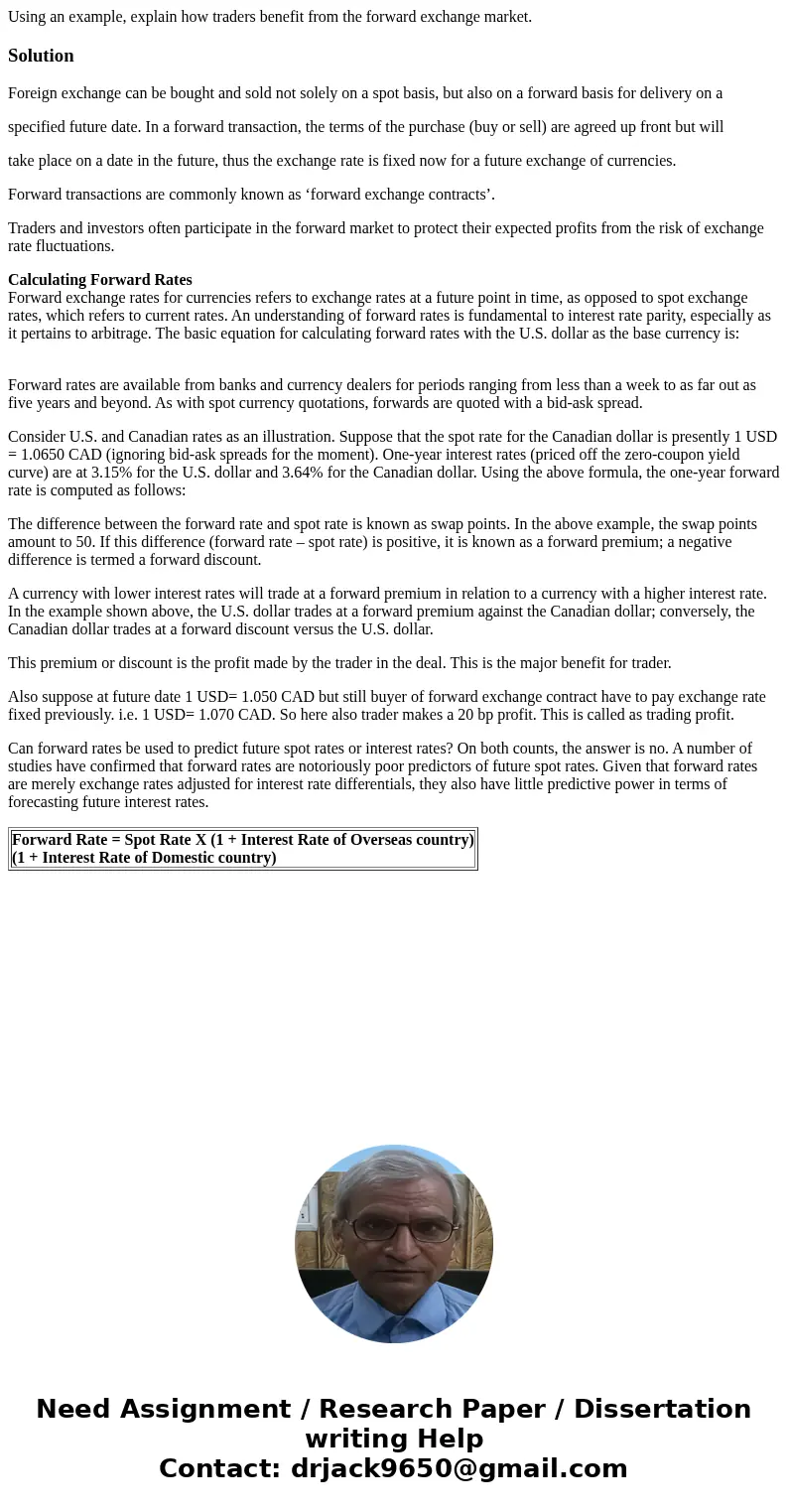Using an example explain how traders benefit from the forwar
Using an example, explain how traders benefit from the forward exchange market.
Solution
Foreign exchange can be bought and sold not solely on a spot basis, but also on a forward basis for delivery on a
specified future date. In a forward transaction, the terms of the purchase (buy or sell) are agreed up front but will
take place on a date in the future, thus the exchange rate is fixed now for a future exchange of currencies.
Forward transactions are commonly known as ‘forward exchange contracts’.
Traders and investors often participate in the forward market to protect their expected profits from the risk of exchange rate fluctuations.
Calculating Forward Rates
Forward exchange rates for currencies refers to exchange rates at a future point in time, as opposed to spot exchange rates, which refers to current rates. An understanding of forward rates is fundamental to interest rate parity, especially as it pertains to arbitrage. The basic equation for calculating forward rates with the U.S. dollar as the base currency is:
Forward rates are available from banks and currency dealers for periods ranging from less than a week to as far out as five years and beyond. As with spot currency quotations, forwards are quoted with a bid-ask spread.
Consider U.S. and Canadian rates as an illustration. Suppose that the spot rate for the Canadian dollar is presently 1 USD = 1.0650 CAD (ignoring bid-ask spreads for the moment). One-year interest rates (priced off the zero-coupon yield curve) are at 3.15% for the U.S. dollar and 3.64% for the Canadian dollar. Using the above formula, the one-year forward rate is computed as follows:
The difference between the forward rate and spot rate is known as swap points. In the above example, the swap points amount to 50. If this difference (forward rate – spot rate) is positive, it is known as a forward premium; a negative difference is termed a forward discount.
A currency with lower interest rates will trade at a forward premium in relation to a currency with a higher interest rate. In the example shown above, the U.S. dollar trades at a forward premium against the Canadian dollar; conversely, the Canadian dollar trades at a forward discount versus the U.S. dollar.
This premium or discount is the profit made by the trader in the deal. This is the major benefit for trader.
Also suppose at future date 1 USD= 1.050 CAD but still buyer of forward exchange contract have to pay exchange rate fixed previously. i.e. 1 USD= 1.070 CAD. So here also trader makes a 20 bp profit. This is called as trading profit.
Can forward rates be used to predict future spot rates or interest rates? On both counts, the answer is no. A number of studies have confirmed that forward rates are notoriously poor predictors of future spot rates. Given that forward rates are merely exchange rates adjusted for interest rate differentials, they also have little predictive power in terms of forecasting future interest rates.
| Forward Rate = Spot Rate X (1 + Interest Rate of Overseas country) (1 + Interest Rate of Domestic country) |

 Homework Sourse
Homework Sourse